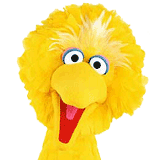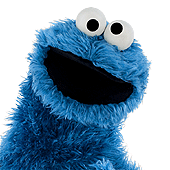I've been saying that for quite some time. Old School set 2 gets far more play than set 1. I do not find the school lecture parts entertaining at all, no matter how warm the human characters are. It somehow seems less realistic when the adults spend their time with kids asking which triangle looks like the others than a weird pinball table that completely changes when it's in a bonus portal (don't know Pinball terminology, but realistically, the breakdown segment should be an LCD screen), fuzzy monsters that eat cookies, fairy tales being news. plus, repeating the same segment 3 times in an episode? I get that it's supposed to mimic commercials, but.. well.. anyone ever watch a TV show that has the same commercial every single break? Like those Windows phone commercials where they fight at a school play? No matter how cute and inventive that stuff is you get sick of it the 10th time in a single night of TV watching.The early seasons were also peppered with lecture-based segments similar to other kids' shows that were on at the time such as Romper Room. Some skits were also longer (need I mention "Hey Cow" or "Fireman Ready to Go"?), and some even repeated themselves. I, for one, am glad they did away with these.
I'm gonna do a smaller breakdown later, actually... Sesame Street really came into its own late 70's through the 80's.
I agree. JTE was supposed to be Sesame Street's answer to Blue's Clues and Dora. But that first incarnation? On the one hand, you did get to see older clips, sure. But the repetition of the same 9 worlds, 3 of each every time just had a terrible flow. And the only really thing going for it was the Ernie segment at the end, but often it was Ernie and Elmo (or just Ernie solo) songs or Ernie's Show and Tell, and not an Ernie and Bert segment. Having Big Bird go on adventures made all the difference. But it still mirrored the problem Abby's Flying School and Super Grover 2.0 would later have. Showing the segments too often per episode count left high numbers of rerun footage.On the subject of JTE, I didn't mind it too awful much... I liked it better when it was retooled starting in Season 34, it seemed to work better sending Big Bird into worlds where he actually had to look for Ernie himself for the entire segment, as opposed to Season 33 where he went into three different worlds that seemed to be put on shuffle, where he finds a box, Ernie's not in it, finds another box, Ernie's not in it, finds the third box, there's Ernie. The retooled JTE was also a lot more interactive and engaging as well.
Honestly, the biggest problem I have with Sesame Street's current form is the reliance on character segments. Not so much for cutting off parts of the show, but for the low budget leaving these expensive to produce segments in low numbers, leaving threepeats in a single 26 episode season, only to have the same ones pad out the next season with like one or two held over segments added to the mix.

 Welcome to the Muppet Central Forum!
Welcome to the Muppet Central Forum!.jpg) Christmas Music
Christmas Music Macy's Thanksgiving Parade
Macy's Thanksgiving Parade Sesame Street debuts on Netflix
Sesame Street debuts on Netflix Back to the Rock Season 2
Back to the Rock Season 2 Sam and Friends Book
Sam and Friends Book Jim Henson Idea Man
Jim Henson Idea Man Bear arrives on Disney+
Bear arrives on Disney+